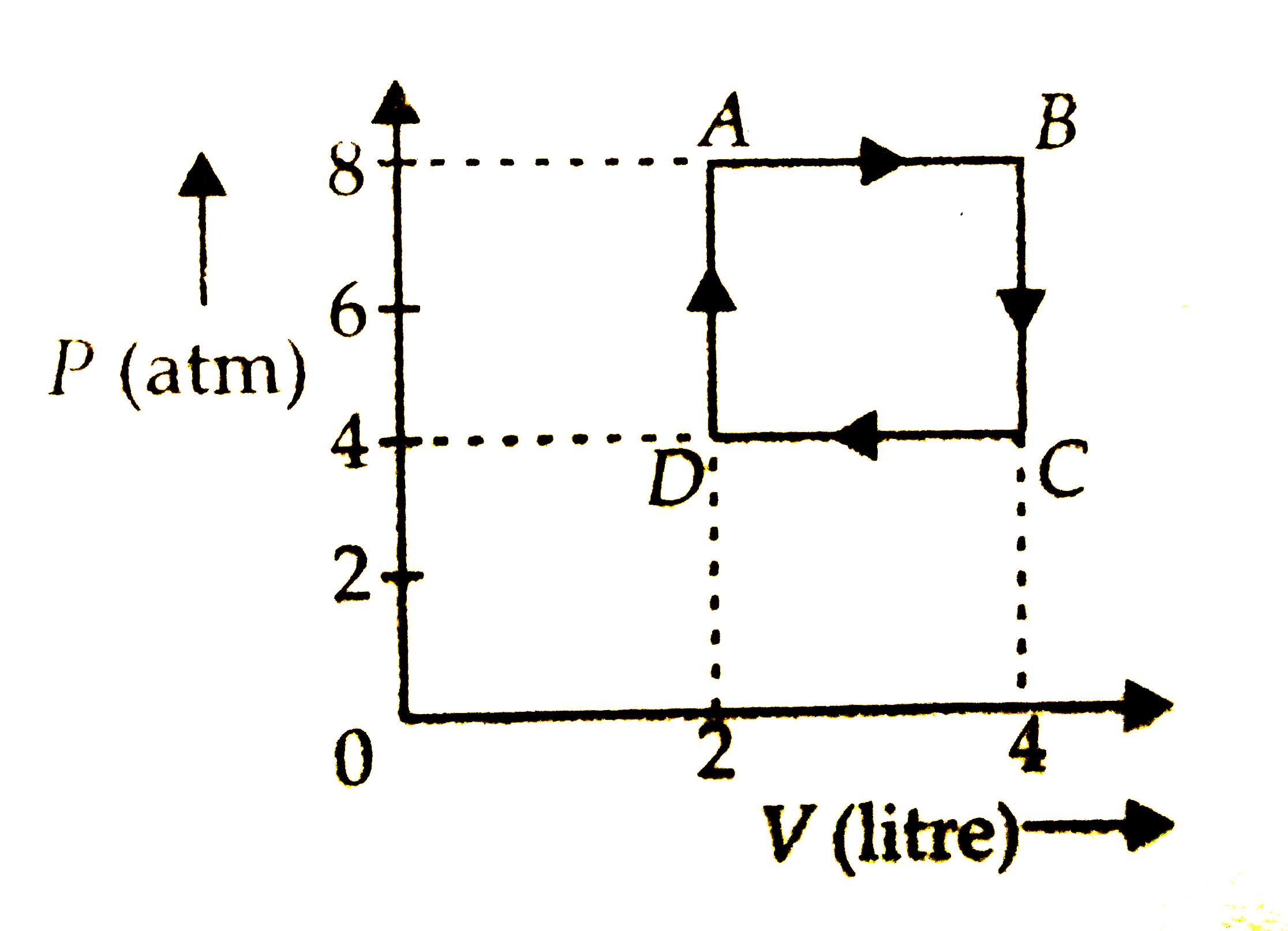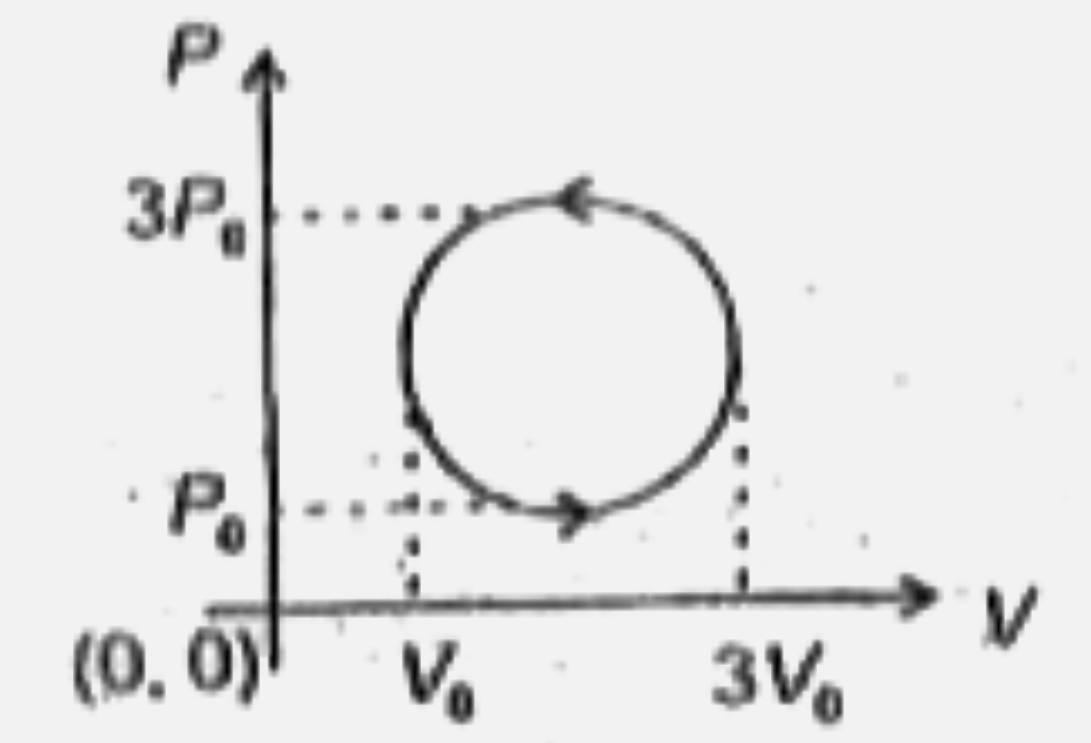Find the work done during the perfectly circular cyclic process as shown in the diagram.

Video Solution
Text Solution
The area of a circle is πR2. But here you have two radii. The horizonatal radius R1=(V2−V1)2 and the vertical radius R2=(P1−P2)2. You know that the area of an ellipe is πR1R2. Where R1&R2 are somi-major and semi minor axis respectively. If R1=R2 the ellipse becomes a circle. So, here the work done = area =πR1R2=π(V2V1)2,(P1−P2)2. The +ve sign is due to the fact that the cycle is clockwise.
|
Similar Questions
Knowledge Check
One mole of an ideal gas undergoes a cyclic process ABCDA as shown in the P-V diagram, The net work done in the process is
(1 atm=10^(6) dyne cm^(-2)) A500 JB700 JC800 JD900 J
A500 JB700 JC800 JD900 JAssertion : The work done by the spring force in a cyclic process is zero. Reason : Spring force is a conservative force.
AIf both assertion and reason are true and reason is the correct explanation of assertion.BIf both assertion and reason are true not but reason is not the correct explanation of assertion.CIf assertion is true but reason is falseDIf both assertion and reason are false.A cyclic process ABCA is shown in the V−T diagram process on the P−V
 A
A B
B C
C D
D
Work done in the cyclic process shown in figure is

View SolutionFind the work done by the gas in the process ABC.

View SolutionAn ideal monoatomic gas of one mole undergoes a cyclic process ADBCA as shown in figure. X and Y are two isothermal curves at temperature 211∘C and 127∘C respectively. If the work done by the gas in cyclic process is λR, then find the value of λ. (R is the gas constant)

View SolutionIn a cyclic process, work done by the system is
View SolutionWork done (in kJ) by the gas in the following cyclic process is

View Solution


